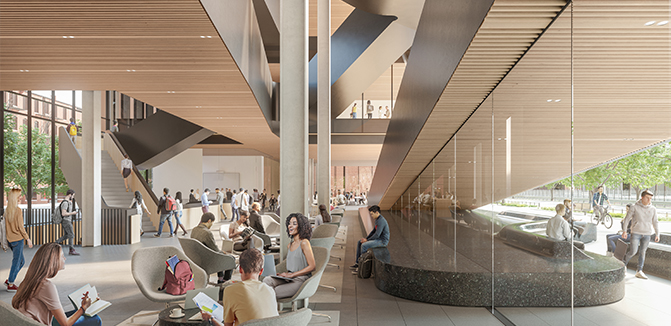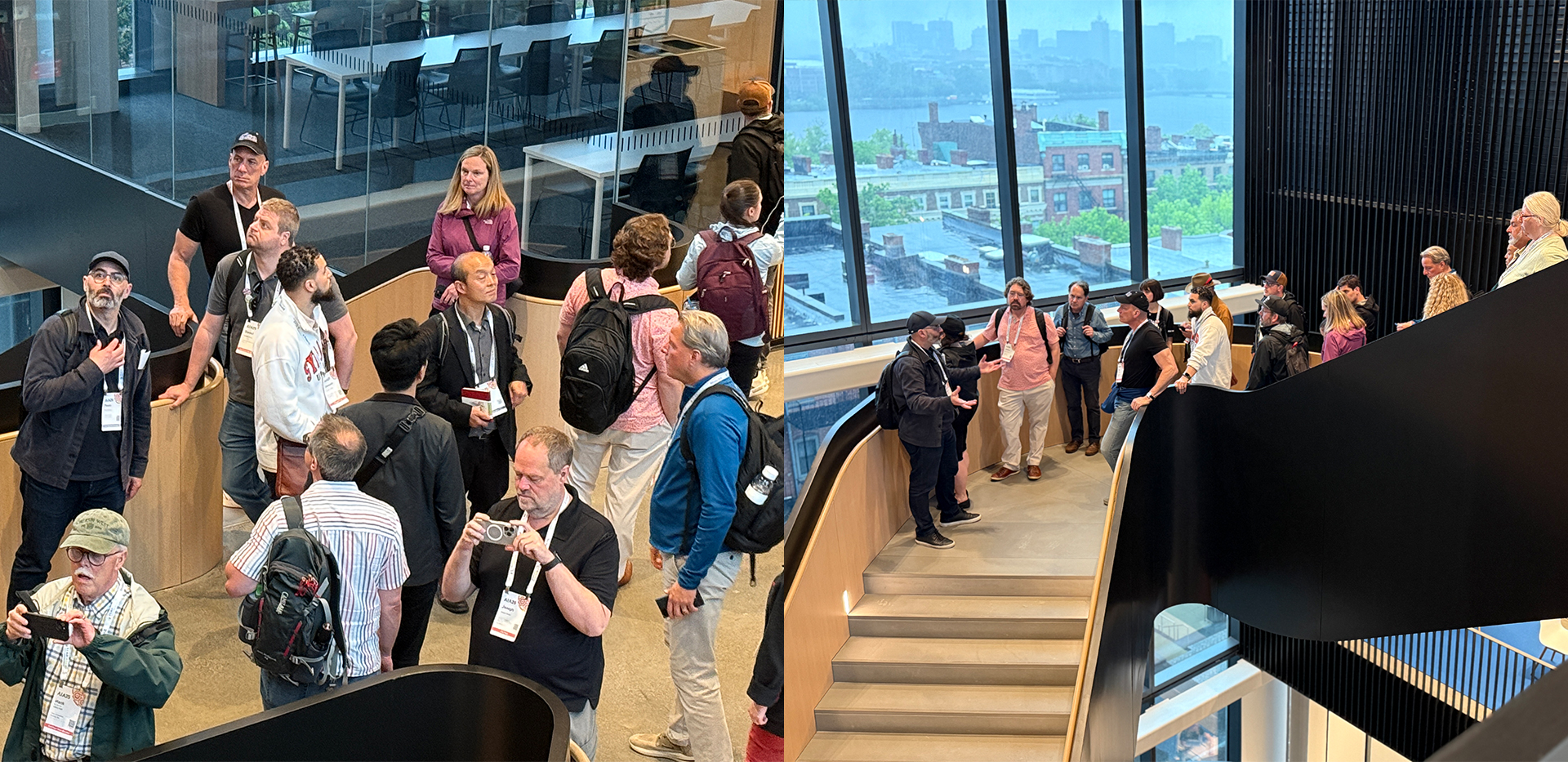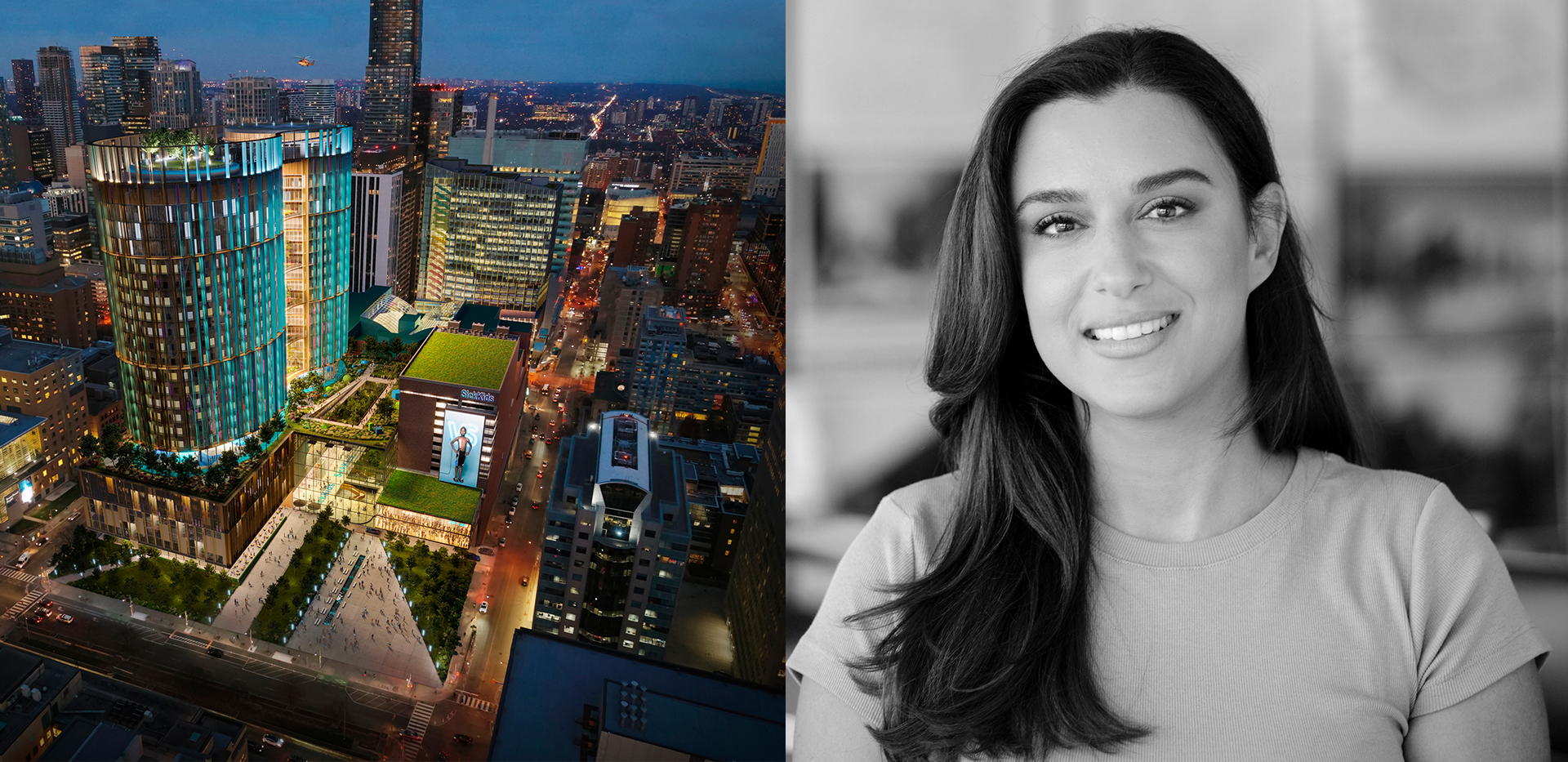Fast Company: Boston University is building the city’s largest carbon-neutral, fossil fuel-free building

Article content
February 6, 2020
Click here to view Fast Company
by Kristin Toussaint
The city of Boston has a goal to be carbon neutral by 2050, but Boston University, which occupies 135 acres of the city, aims to be carbon neutral by 2040. It’s not because the school is competitive, explains Dennis Carlberg, associate vice president for university sustainability at BU, but because if BU doesn’t accomplish that first, there’s no way the city will hit its goal in time. It’s not just municipal buildings that need to be carbon neutral, it’s the whole city, and BU is banking on a new building now in the works on campus to help the school and the city reach that goal.
BU’s new Center for Computing and Data Sciences, designed by KPMB Architects, will include a bevy of environmentally friendly initiatives. The 19-story building will be carbon neutral and fossil fuel-free, with no gas lines connected to the building. Instead, 31 geothermal wells, each 1,500 feet deep, will heat and cool the system via a ground-source heat exchange. Much like a refrigerator compressor pulls heat out of the fridge, the water will pull heat out of the building as it goes down the pipes in the summer, and then bring heat from the Earth into the building in the winter.
The first floor of the building is raised to what Carlberg calls BU’s “elevation of resilience,” meaning that the building is two feet above the elevation of possible flooding from the nearby Charles River. The building is about five feet higher than the city’s suggested level to protect against sea level rise. It does have a basement, though, because there wasn’t space in the above floors in which to put mechanical equipment, but the basement will feature the ability to install temporary flood protections, as well.
The window system includes three layers of glass to keep heat inside during the winter, and the building’s exterior will have fixed shades, thanks to diagonal and vertical slats called louvers, that shield the inside of the building from the sun’s heat in the summertime. This, along with that thermal energy system that uses water instead of air for heating and cooling, will make the building more energy efficient.For its electricity, the center will not be directly powered by renewable energy, but BU will match this building’s electricity load with renewable energy generated from a wind farm in South Dakota. BU invested in renewable energy there, Carlberg says, because it makes a bigger impact than building even more renewable energy in New England, which has so many renewables installed that a new wind farm isn’t likely to replace coal use.
The building’s offset “stack of books” shape allows for a series of roof terraces and green roofs all the way up the building, not only on top. This shape also ignited some controversy over the building, which is set to be the tallest on BU’s campus at 305 feet tall, and will be situated right on Commonwealth Avenue, the campus’s main drag. “People have opinions about the way it looks—I’ll leave it at that,” Carlberg says.
BU ceremonially broke ground on the building this past December, though the geothermal wells have already been excavated. Construction is set to start this spring, after commencement, so as not to disturb campus life (more than the work already has). In total, the project will cost $290 million, per the school. It’s slated to open in 2022, at which point it will house the school’s mathematics, computer science, and data science programs.
Carlberg sees the building as the new heart of the BU community, a gathering place for collaboration, and an example of how to make buildings, in Boston and beyond, more climate-friendly. While the design might strike people as novel (or too novel) right now, he hopes it isn’t in the future—and he’s fine with other institutions taking a page from this playbook. “There are a lot of organizations that are making great progress, but we’re sort of on a mission to make sure that we peel away the mystery of how this gets done and what matters,” he says. “What matters to me is that we do everything we can, not only to make a carbon-free, fossil fuel-free building, but how we can help others do the same, because we can’t do this alone.”
)
)
)